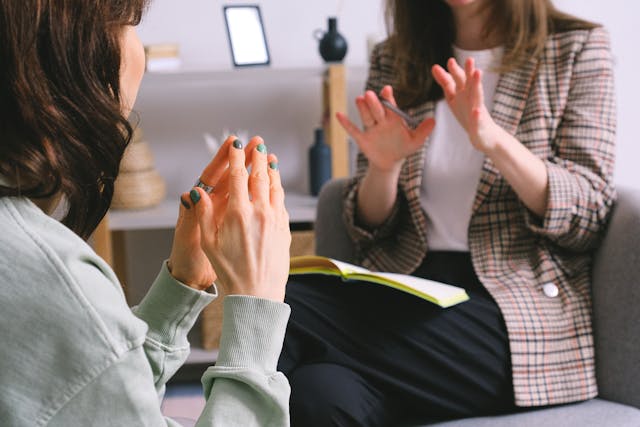Before embarking on my journey as a therapist, the concept of active listening remained largely obscure to me, as did its pivotal role in fostering effective communication within relationships. Effective communication demands more than just hearing words – it necessitates focused attention, concentration, and adeptness in understanding the deeper layers of communication. However, the good news is that anyone can refine their active listening skills to nurture stronger and more meaningful relationships. Here’s a comprehensive exploration of this vital skill.
Understanding Active Listening:

Active listening, initially developed for therapeutic contexts such as counselling and mediation, involves a listener’s ability to fully engage with the speaker, comprehend their message beyond surface-level words, and respond empathetically. In contrast, passive listening involves merely acknowledging the speaker’s words without truly grasping their intended meaning or emotions. Achieving full engagement requires the practice of active listening, which entails:
- Being completely present in the moment, free from distractions or multitasking.
- Providing ample space for the speaker to express themselves fully without interruption.
- Concentrating on understanding the speaker’s message, both verbally and non-verbally.
- Validating the speaker’s emotions and perspectives through empathetic responses.
- Retaining key points and important details conveyed by the speaker to demonstrate active engagement and understanding.
The primary goal of active listening is to ensure that the speaker feels genuinely heard, understood, and validated, thereby fostering trust and deeper connection within the relationship. While there are numerous factors that can contribute to relationship challenges, poor communication often lies at the root of many conflicts and misunderstandings.
The Three A’s of Active Listening: Active listening is not merely a passive skill but rather an active and intentional practice that requires energy, self-awareness, and commitment from both parties involved in the conversation. Here’s a detailed breakdown of the three fundamental components of active listening:
- Attention: Being fully present means more than just listening to the speaker’s words; it involves actively observing their body language, tone of voice, and emotional cues to gain a comprehensive understanding of their message. Active listeners refrain from interrupting or rushing the speaker but instead focus on processing the information, identifying key points, and summarizing them to confirm understanding.
- Attitude: Cultivating a positive and non-judgmental attitude is crucial for creating a safe and supportive environment for open communication. Active listeners refrain from passing judgment or expressing hostility, allowing the speaker to express themselves freely without fear of criticism or rejection. They reserve their own opinions or reactions until after the speaker has fully shared their perspective.
- Adjustment: Recognizing the dynamic nature of conversations, active listeners remain flexible and adaptable in their approach. Conversations can shift unexpectedly in tone or direction, and active listeners are prepared to adjust their responses accordingly. They understand that communication is a two-way street, and their role is to support the speaker by actively engaging with whatever arises during the conversation.
Practical Techniques for Verbal Active Listening: In addition to cultivating a mindset of active listening, there are specific verbal techniques that can enhance the effectiveness of communication within relationships. These techniques include:
- Expressing gratitude and appreciation for the speaker’s openness and honesty, even if complete understanding has not been reached.
- Demonstrating active recall by remembering and referencing past conversations, emotions, and experiences shared by the speaker. This shows that you value their perspective and are committed to understanding them on a deeper level.
- Reflecting back the speaker’s words or summarizing their main points in your own words to confirm understanding and convey empathy.
- Being attuned to non-verbal cues such as body language, facial expressions, and tone of voice, as these can provide valuable insights into the speaker’s emotions and intentions.
Furthermore, maintaining a respectful demeanour, maintaining eye contact, and minimizing distractions such as electronic devices during conversations are essential practices for demonstrating full engagement and respect for the speaker.
As psychiatrist Karl A. Menninger astutely observed, listening is not merely an act of hearing but a transformative force that nurtures relationships. Seeking assistance to improve communication skills is a proactive step towards sustaining healthy and fulfilling relationships, as effective communication serves as the cornerstone of meaningful connections and emotional intimacy.



